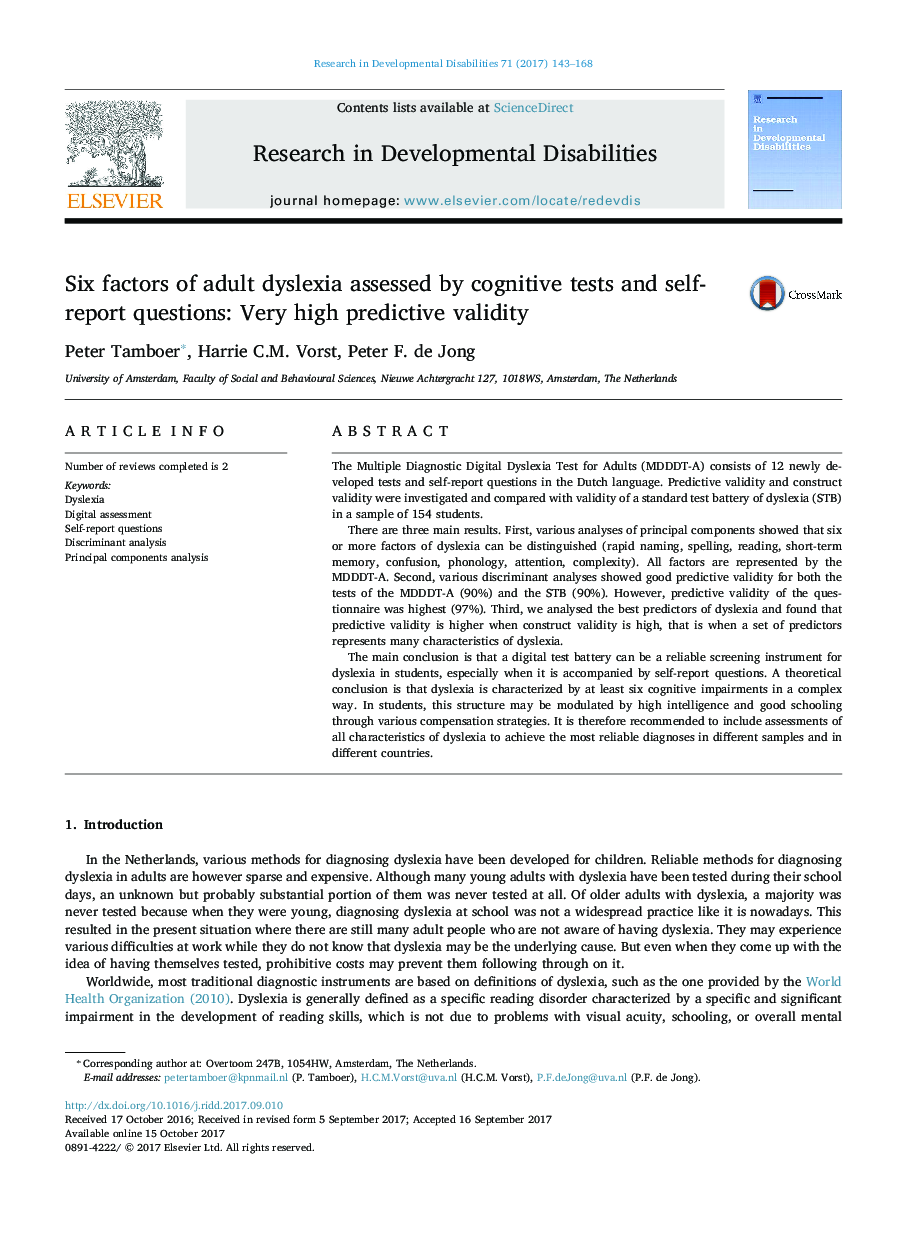| Article ID | Journal | Published Year | Pages | File Type |
|---|---|---|---|---|
| 4940976 | Research in Developmental Disabilities | 2017 | 26 Pages |
The Multiple Diagnostic Digital Dyslexia Test for Adults (MDDDT-A) consists of 12 newly developed tests and self-report questions in the Dutch language. Predictive validity and construct validity were investigated and compared with validity of a standard test battery of dyslexia (STB) in a sample of 154 students.There are three main results. First, various analyses of principal components showed that six or more factors of dyslexia can be distinguished (rapid naming, spelling, reading, short-term memory, confusion, phonology, attention, complexity). All factors are represented by the MDDDT-A. Second, various discriminant analyses showed good predictive validity for both the tests of the MDDDT-A (90%) and the STB (90%). However, predictive validity of the questionnaire was highest (97%). Third, we analysed the best predictors of dyslexia and found that predictive validity is higher when construct validity is high, that is when a set of predictors represents many characteristics of dyslexia.The main conclusion is that a digital test battery can be a reliable screening instrument for dyslexia in students, especially when it is accompanied by self-report questions. A theoretical conclusion is that dyslexia is characterized by at least six cognitive impairments in a complex way. In students, this structure may be modulated by high intelligence and good schooling through various compensation strategies. It is therefore recommended to include assessments of all characteristics of dyslexia to achieve the most reliable diagnoses in different samples and in different countries.
